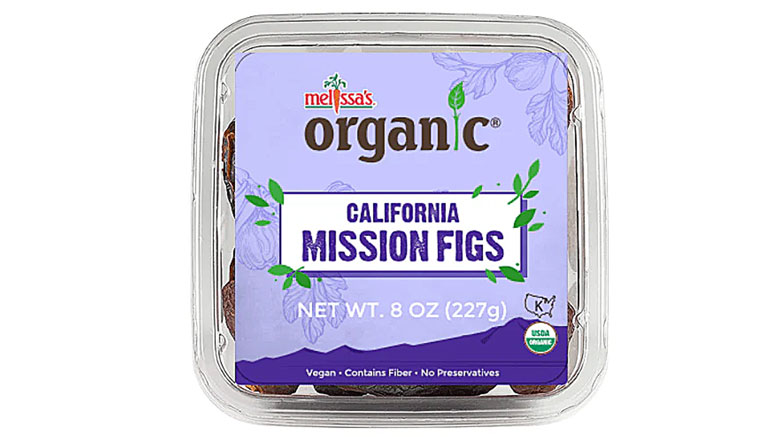Dried Figs Desirable to Many
September 4, 2024 | 5 min to read
Retailers are encouraged to offer dried figs year-round due to their growing popularity. Originating in Turkey, California now dominates fig production in the U.S. Underlining the demand, Karla Stockli notes the industry is expanding, anticipating a 10,000-ton crop in 2024. Dried figs serve as a nutritious, versatile snack with significant health benefits, making them a pantry staple. To boost sales, retailers should enhance consumer awareness through effective marketing strategies and strategic product placement.

Retailers should be selling dried figs year-round.
The natural sweetness and complex flavor of figs has drawn fans for centuries.
One of the world’s first cultivated fruits, this luscious fruit treat likely originated in Turkey, and then spread throughout the Mediterranean and to numerous other spots in the world.
Today, California is the largest U.S. producer. It produces 100% of the dried figs in the market, and 98% of the fresh figs sold. The leading black fig is named Black Mission in honor of the Spanish missionary fathers who first planted figs at the missions in California.
Karla Stockli, chief executive officer of the California Fresh Fig Growers Association, Madera, CA, says demand for California figs is continuing to grow.
“The industry has returned to pre-pandemic sales figures, with growth in foodservice, commercial foodservice, product manufacturing and retail,” Stockli says. “The industry has planted additional acreage in response, with an estimated 10,000-ton crop in 2024 (fresh and dried).”
Fresh figs reach markets from May to December, but dried figs are obtainable year-round.
GREAT TO GRAB-AND-GO
Melissa’s World Variety Produce, Vernon, CA, offers both organic California Mission and organic California Golden dried figs, plus fresh figs when in season. “Dried figs are more popular for us,” reports Director of Public Relations Robert Schueller, “although we have California fresh figs typically available from May to September.”
“Dried figs are a great grab-and-go snack,” adds Schueller. “When dried, their sweetness is amplified and their texture is chewy with a satisfying crunch from tender seeds at the center of the fruit.”
He recommends eating them out of hand or adding them to baked goods or salads.
Sales of Melissa’s Mission Dried Figs grew 12% from the previous year, compared with their Golden Dried Figs’ growth of 8%, Schueller says, explaining the Mission figs are more familiar to consumers.
Stockli says the biggest category for growth is fig-flavored products in consumer-packaged goods. “Figs are now prevalent in the snack food aisles and produce sections. In terms of packaging, we are seeing fresh fig imagery trending to attract customers.”
Although there are hundreds of fig varieties, California grows eight commercially. Black Mission, Calimyrna, Kadota, and Sierra are processed dried and fresh. Conadria, Tena, and Tiger are dried only, and Brown Turkey is sold fresh only.
Western Mixers Produce and Nuts, Inc., Ontario, CA, produces Dried Black Mission Figs and Dried Sierra Figs. The products are available year-round, reports Kristin Bolstad, marketing manager.
DEMAND FACTORS FOR DRIED FIGS
Dried figs have a steady demand year-round, according to Mike Maxwell, vice president, Procacci Bros., wholesale produce distributors, Philadelphia, PA. “They do not need refrigeration, but demand picks up in the cooler months.”
“Retailers should keep the shelves stocked all year, and customers should be able to find them along with dry nuts in the produce section.”
“Customers love California Dried Figs for various reasons,” Stockli says. Nutrition heads her list. “Just three to five figs provide 5 grams of dietary fiber, or 20% of the daily value.”

PHOTO COURTESY TRADER JOE’S
Versatility also ranks highly. “From sandwiches and salads to pizzas and paninis, figs fit any daypart,” says Stockli. Moreover, dried figs are shelf-stable. “Dried figs are a pantry staple for many, lasting up to six months in a cool, dark storage area.”
Tradition spurs both cultural and seasonal demand. Stockli explains, “Many people grew up with figs, as many cultures and traditions include figs.”
Bolstad agrees. “Dried figs are desirable to a wide demographic of customers.”
Seasonality plays a part, Schueller notes. “The fourth quarter brings 70% of our dried fig sales.”
ENHANCE SALES
Stockli notes dried figs are becoming a more popular snack and/or ingredient year-round, as consumers discover the nutritional benefits and unique flavor.
“The biggest barrier to fig consumption is awareness. Many people are still unfamiliar with figs (or only familiar with one particular cookie),” she says. “It is very exciting to continue to have the opportunity to introduce people to and witness them tasting this amazing fruit for the first time. The industry is working hard to create awareness, including partnerships with bloggers and retailers to educate consumers with nutrition facts and recipe ideas.”
To help educate consumers, Bolstad recommends retailers use store signs, handouts, the weekly ad and social media.
According to Stockli, the California fig industry has worked with retailers to promote California dried figs through sampling in-store, social media and traditional media.
Bolstad emphasizes “sales and discounts always drive business.” For sampling or cross-merchandising pairs, she suggests cheese, fruits, nuts, baked goods, honey and caramels.
At Trader Joe’s in State College, PA, produce manager Dan Hesil reports dried figs are displayed on shelves overlooking produce items. In addition, the figs also are included with other dried fruits and nuts.
Bolstad agrees with the store’s placement. She recommends the product be placed in the produce department at the endcaps of aisles.
The Boise, ID, WinCo Foods LLC, store sells both the Black Mission Dried Figs and the Golden Dried Figs in bulk with the produce.
Produce associate, Bill Smith, reports the Black Mission packages are the most popular.
Stockli says California dried figs can be found in most major grocery stores, and are typically displayed in the center aisle or produce section with other dried fruits and nuts.
25 of 30 article in Produce Business September 2024

